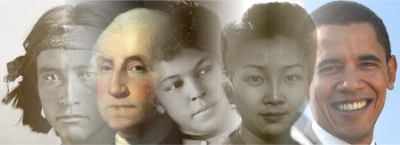Excerpt from Examining the Evidence: Seven Strategies for Teaching with Primary Sources
From Strategy 3: Look for Bias
Manipulation of the Source
Bias can manifest itself in the editing of a source as well as the creation of it. A
potent example to bring up with older students is the diary of Anne Frank. Anne
Frank wrote her diary but she wasn’t alive to choose whether or what parts of the
diary should be published. Her father edited her diary and didn’t include many
entries where Anne wrote about sex or wrote less than kind or flattering descriptions
of the people in her life. For example, Otto Frank understandably did not
include an entry where Anne wrote, “Father’s fondness for talking about farting and
going to the lavatory is disgusting.” (A complete version of Anne Frank’s diary was
published in 1996 after her father’s death.) This example, instructive and memorable
as it is, may not be something you want to use with your students. For classroom
purposes, you could give your students this example. Anne wrote about their
helper Bep’s getting engaged. She says that the family isn’t happy about it because
they don’t think Bep loves her future husband. Otto Frank removed that entry
because Bep was still alive and he didn’t want to hurt her feelings.
Often, material will be edited for use in textbooks. Excerpts will be chosen for
their level of readability, for example, and difficult sections edited out. A photograph
can also be edited. Photographs are often cropped before they are published,
sometimes to fit space requirements and sometimes to make a better composition.
But it is also possible to crop something out of a photograph that someone does not
want us to see. A famous example of this is Stalin’s systematic removal of his political
enemies from official photographs. Visual examples of this can be found by
doing a simple Internet search. For example, a University of Minnesota web page
shows the removal of Trotsky from some Soviet photographs.
Let’s emphasize again that we are not saying that any of these sources are useless
as sources of information. But the fact that both images and text can be manipulated
points up the fact that it is dangerous to generalize from just one source.
Remember, “if your mother tells you she loves you, . . . ”
“The camera doesn’t lie” has lost a lot of currency since the advent of Photoshop,
but a photograph does not have to be significantly altered to show the bias of the
photographer. A few harsh shadows can make a kind, compassionate person look
like a villain. A few pretty props and a soft focus can make a selfish lout look like an
angel. Most photographic bias, of course, is much subtler than that, but having a
little bit of visual literacy can be very valuable in looking at a primary source photograph
as well as cartoons, drawings, and other forms of art that we intuitively feel
would be easier to “fudge.”
For example, it is possible to change the effect of a photograph simply by lighting
it differently.

Photographs of radio personality Mike Nowak. Photograph by Helen Tracy, 2013. Austin/Thompson Collection
When
asked to describe the character of the man on the left, viewers might use
words like kind and friendly. The print on the right would be much more likely to
elicit words like tense, annoyed, or even sinister.
|

